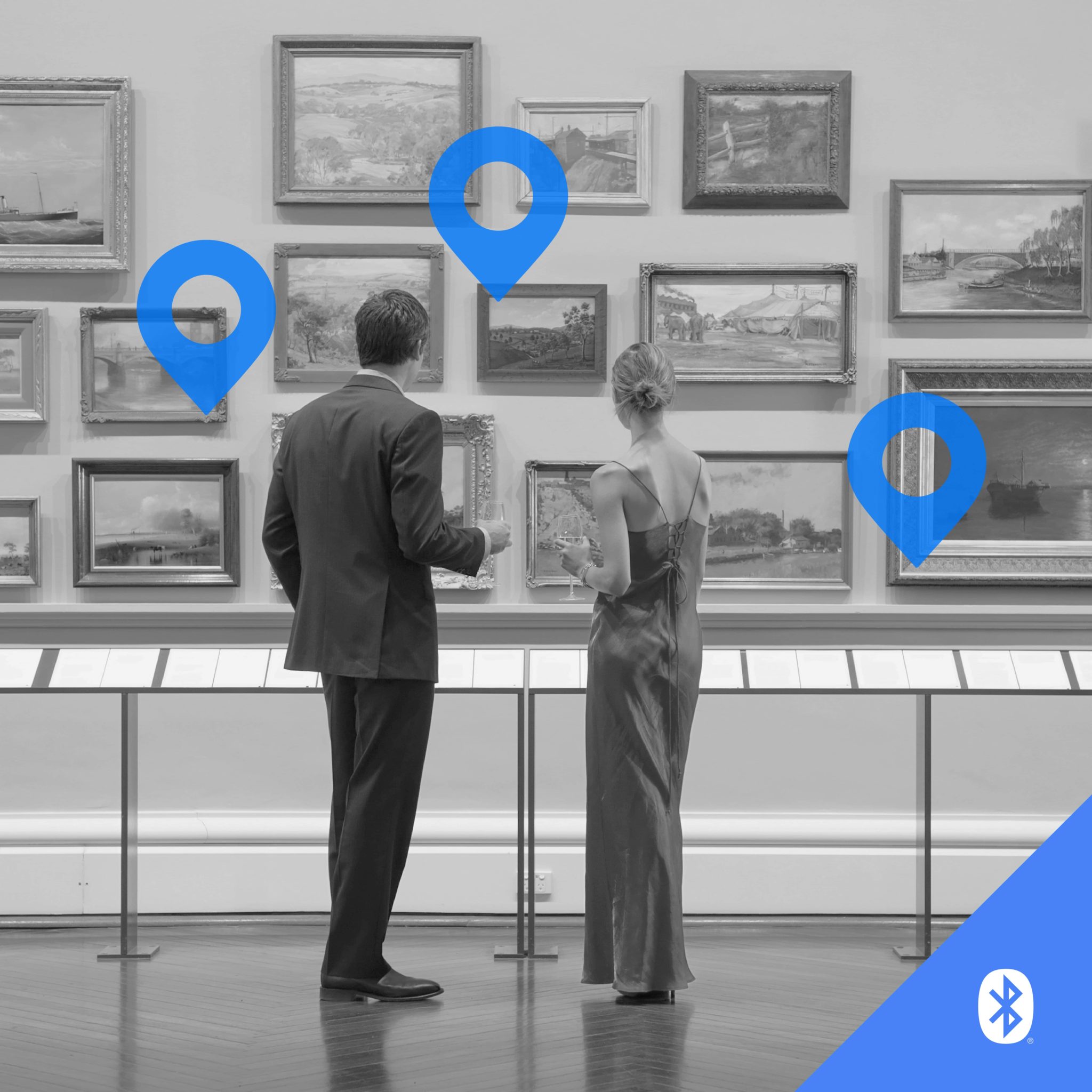
For years, Bluetooth® technology has powered a wide range of proximity solutions in smart buildings, smart homes, and smart cities around the world. According to the 2018 Bluetooth Market Update, annual shipments of Bluetooth Location Services devices are forecasted to grow 10x by 2022. This widespread adoption and success helped create a market demand for enhancing the user experience with proximity solutions.
Proximity solutions use Bluetooth technology to understand where two devices are relative to each other. To date, these solutions have been based on one device using Bluetooth to understand if another device is within range and, in many cases, estimating the distance to the other device using received signal strength (RSSI) measurements. Point of interest (PoI) information and item finding are two of the most popular Bluetooth proximity solutions. To enhance the user experience of common proximity solutions, the Bluetooth member community added a direction finding capability to Bluetooth technology.
Precise PoI
PoI information solutions were one of the first Bluetooth® Location Services to come to market. In a PoI information solution, small, battery-powered Bluetooth enabled transmitters, often referred to as beacons, are deployed throughout facilities to improve the visitor experience. Bluetooth PoI information solutions can not only determine how far away another device may be but also in what direction.
Many museums now support smartphone apps that provide visitors with additional information about nearby exhibits. The National Gallery of Victoria (NGV) in Australia and the Van Gough Museum in Amsterdam are two such case studies that are already using Bluetooth enabled beacons to create a better visitor experience.
With the addition of the new direction finding capability, Bluetooth proximity solutions have the potential to deliver even greater performance. Museums, for example, often have rooms that support multiple exhibits with associated beacons. With direction finding support, a PoI information application on a smartphone could not only inform a user of all the exhibits in the room and allow them to select one to receive additional information, but the user could simply point their smartphone at a specific exhibit to get more information on that item.
Get Closer with Blue

Bluetooth® enabled solutions will now be able to get you closer to the items you’re looking for. Current item finding solutions, such as Tile trackers, leverage small, battery-powered Bluetooth devices, often referred to as personal property tags, that can be attached to movable objects like a set of keys or a wallet. These solutions help consumers locate misplaced items. So long as the item is connected to a Bluetooth tag, an app on their smartphone will let them know if the item is nearby and approximately how close.
Thanks to new Bluetooth Direction Finding capabilities, item finding solutions could be enhanced to provide directional information. With direction finding support, in addition to identifying how close a misplaced item is, an item finding application on a smartphone could also determine the item’s direction, improving the user experience.
Download this paper, Enhancing Bluetooth Location Services with Direction Finding, to learn how the new direction finding feature will enhance other Bluetooth® Location Services.
![]()
FEATURED DOWNLOAD
Enhancing Bluetooth Location Services with Direction Finding
A new Bluetooth Direction Finding feature allows devices to determine the direction of a Bluetooth signal, thereby enabling the development of Bluetooth proximity solutions that can understand device direction as well as Bluetooth positioning systems that can achieve down to centimeter-level location accuracy.




























